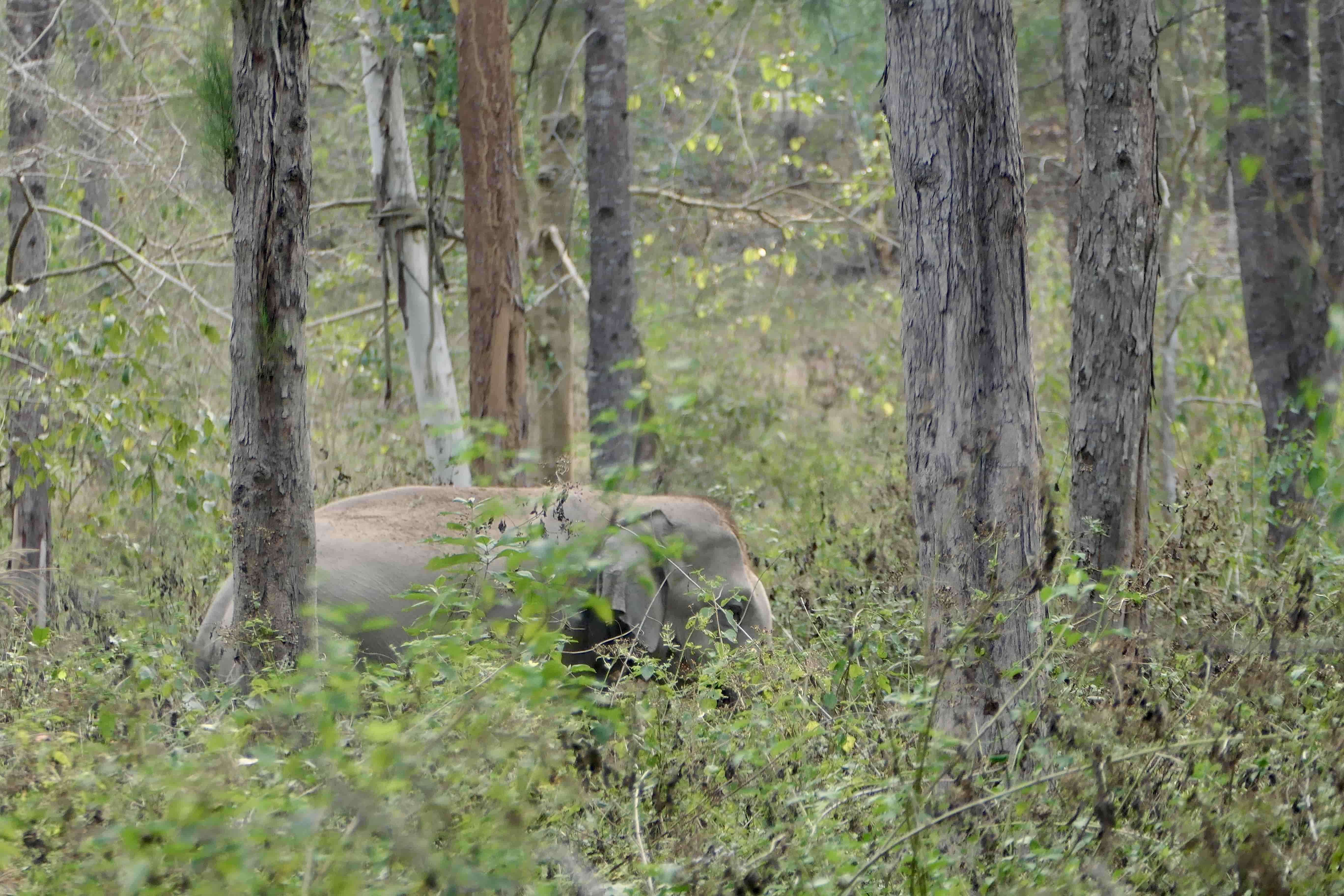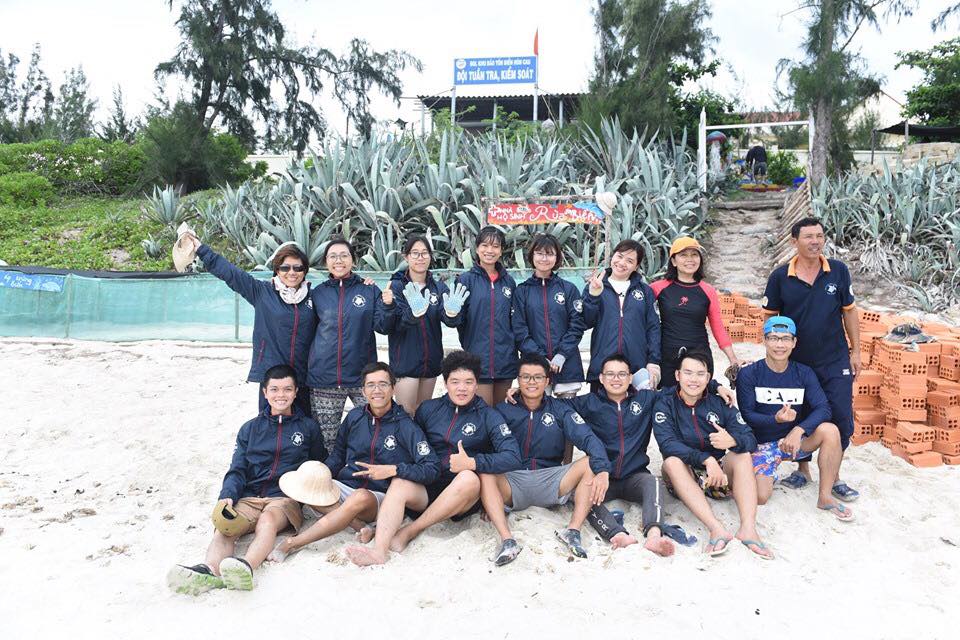Local Species Champion Group work to save Grey-Shanked Douc Langurs in Viet Nam
Grey-shanked Douc Langurs (Pygathrix cinerea), playful primates recognised by their long white whiskers and orange collars, can only be found in the central highlands of Viet Nam. Listed as Critically Endangered on the IUCN Red List of Threatened Species™ since 2008, they’ve been hunted for food, ‘medicine’ and sold as pets. Their numbers have decreased by 80% in the last 30 years, with likely fewer than 2000 individuals left in the wild.
Tam My Tay commune in Quang Nam Province, Viet Nam, is known for its Tam My sticky rice and locally sourced produce. The fertile fields that stretch across the landscape turn with each season’s harvest, symbolising the commune’s reliance on farming for their livelihoods. Tourists are increasingly drawn to local ecotours that offer a chance to see Grey-shanked Douc Langurs tucked away in the isolated forest patches that blanket the hills of the commune. As these once large areas of forests have been steadily cleared for agriculture and timber production, particularly Acacia plantations, the number of langurs has also been declining.

Recognising the urgent need to protect forests for the langurs, and in support of ongoing community conservation efforts, the GreenViet Biodiversity Conservation Center implemented the Protecting the Grey Shanked Douc Langurs through supporting species champions in Tam My Tay project, funded by the Critical Ecosystem Partnership Fund (CEPF) and IUCN (International Union for Conservation of Nature).
At the heart of this project is the Species Champion Group made up of local community members, commune officials and voluntary forest rangers. They conduct regular patrols to monitor the langurs and prevent illegal hunting as well as forest clearance. Using the information they obtain, they run awareness raising campaigns on the threats facing the langur population.
Acacia plantations across Central Viet Nam have been a driver of biodiversity loss and deforestation in recent years. Recognising this as one of the factors affecting the Grey-shanked Douc Langur population in Tam My Tay, the Species Champion Group set out to raise awareness among the local communities. They travelled from village to village throughout 2022 and 38 households have now made a 'Sustainable Cultivation Commitment'. This commitment calls for the protection of forests, with households pledging to work with the Species Champion Group to formulate a plan to reduce the commune’s direct impact on forest degradation.

“The timely support of this project provides technical and financial support for our work, but also builds trust within communities and inspires local volunteers who want to be part of saving the langurs. In 2019, there were 50 Grey-shanked Douc Langurs in our area, but due to this project, and with support from others, our most recent survey showed that the population had grown to 69. This is almost a 40% increase in the number of langurs, which is an encouraging sign for long term conservation,” Mr Ngyyen Du, Head of the Species Champion Group.

The Species Champion Group has been working to generate more public interest in conservation as part of their awareness raising campaign. They developed standees and brochures, as well as a website to promote the importance of protecting langur habitat, gaining the community national media attention for its conservation efforts. “Grey-shanked Douc Langurs are extremely precious and rare. Through awareness raising campaigns many tourists already know about Tam My Tay and contact us to see the langurs in their natural habitat,” said Mr Vo Ngoc Danh, member of the Species Champion Group.
To capitalise on increasing interest among tourists to visit Tam My Tay, the Species Champion Group conducted a study to assess local resource availability and readiness to implement community-based tourism. Family members from 15 households took part in study tours to see successful models of community-led tourism in neighbouring areas, identify opportunities to collaborate on future tours and seek inspiration to develop their own model.
The first of Tam My Tay’s tours were advertised through the Species Champion Group’s website and social media in 2022. While community-led tourism is in its early stages in Tam My Tay, it is an opportunity for a sustainable income stream that places environmental protection at the centre of the commune’s development.

Founded in 2012, GreenViet has been working alongside the community and local government to strengthen species conservation. They were the first organisation to conduct research on the population and distribution of the Grey-shanked Douc Langur in Tam My Tay. Findings from their research were used to support the declaration of a special-use forest area to conserve the langur population and their habitat.
GreenViet continues to work closely with the local government to monitor the number of langurs in the special-use forest area. They hope to see the population of langurs grow and are advocating for the expansion of the special-use forest areas. The Species Champion Group in Tam My Tay continue with their work to increase the visibility and effectiveness of conservation efforts led by local communities.
“Since the start of the CEPF-supported project in 2021, the Species Champion Group has not observed or received any reports of hunting activity in the protected area,” Mr Vo Ngoc Danh shared. “We must keep up our efforts to make sure the langurs and our forests continue to survive and benefit people of Tam My Tay."
About CEPF
CEPF empowers non-governmental organizations, Indigenous groups, universities and private enterprises to protect the world’s biodiversity hotspots and help communities thrive. It is a joint initiative of l’Agence Française de Développement, Conservation International, the European Union, the Global Environment Facility, the Government of Japan, and the World Bank. In the Indo-Burma Hotspot, it is also supported by the Margaret A. Cargill Philanthropies. IUCN serves as CEPF’s Regional Implementation Team in the Indo-Burma Hotspot.



